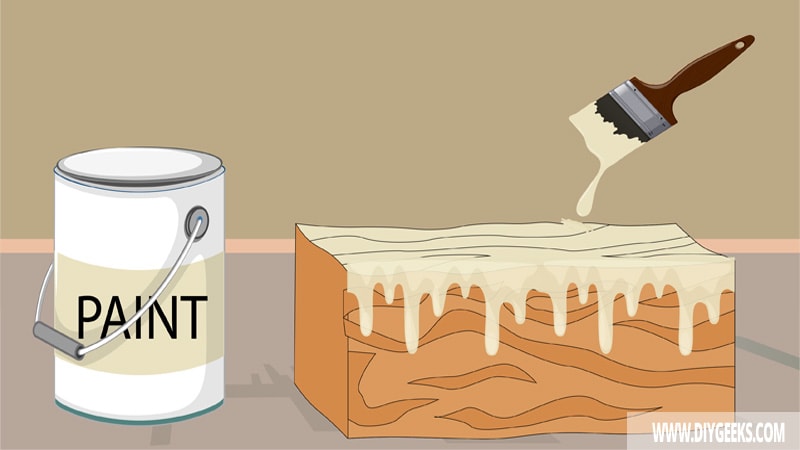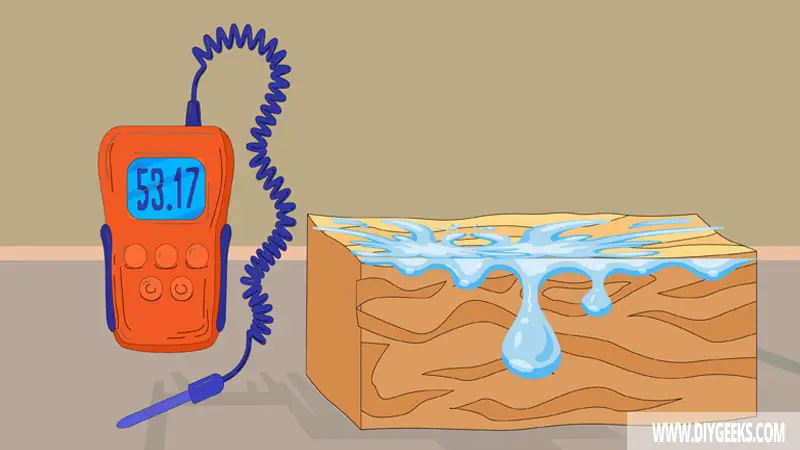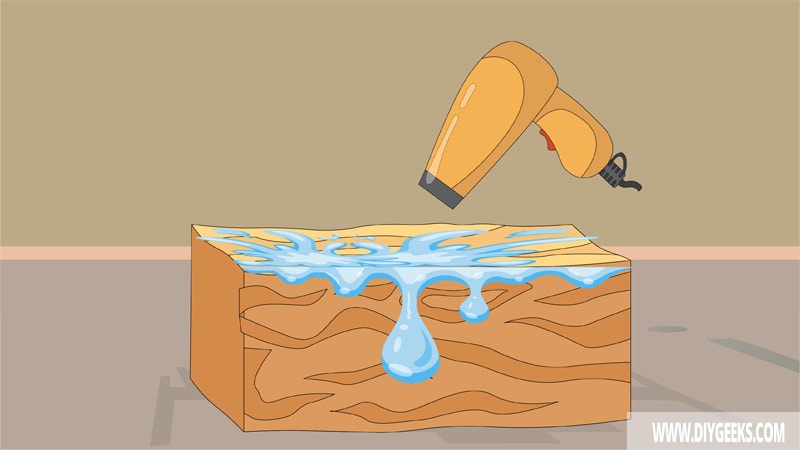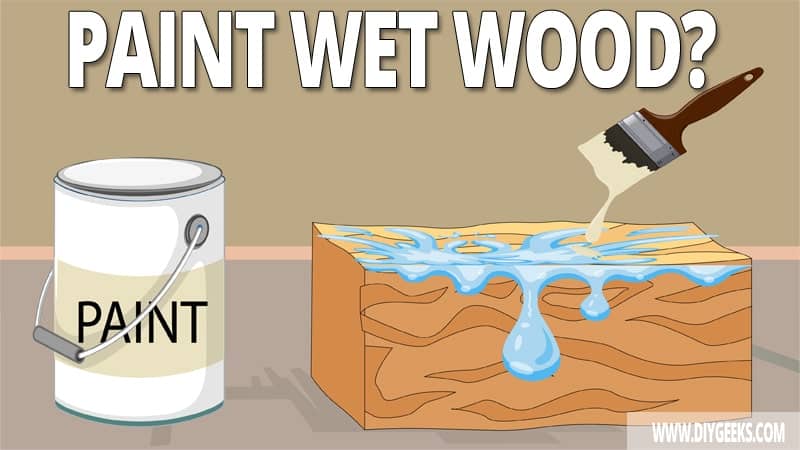You can’t paint over wet wood until the moisture levels are lower than 12%. The surface moisture will prevent proper paint penetration and adhesion.
A wet wood is a surface that contains high moisture or water content and can prevent paint coating from adhering.
Wood must dry between 1 to 3 days before painting over it. The exact dry time depends on the wood type, moisture levels, and ambient temperature.
Does Paint Adhere To Wet Wood?
The paint doesn’t adhere well to wet wood as the moisture prevents proper paint penetration and adhesion.
If the surface is wet, the wood fibers (or pores) absorb too much water and tannins and don’t have space to absorb the paint. Since the wood pores don’t absorb the paint coating, the coating stays over the top layer, doesn’t adhere, and turns sticky (or tacky) until it peels off.
If the paint penetrates the wood pores, the exiting moisture in the pores will prevent the paint from drying, creating a sticky finish. To improve the paint adhesion, apply a waterproof primer to shield the surface moisture and allow the paint to dry.
Does Moisture Prevent Paint Adhesion?

Moisture prevents paint adhesion as it doesn’t allow the paint to penetrate, adhere, or dry properly over the surface. Wood moisture isn’t just water — it’s a mixture of water, tanning, and oils that can mix with paint and contaminate it.
If you apply paint over damp wood, the paint takes longer to dry as the moisture (water) prevents the paint solvent (oil or water) from evaporating fast. Once the paint coating dries, it doesn’t last long as the coating will be affected by moisture, dust, and stains.
How Long Does Wood Take to Dry Before Painting?
Wood must dry between 1-3 days before painting over it. The exact dry time depends on the wood type, moisture levels, and ambient temperature.
For instance, softwood or thin plywood dry faster as they are thinner and don’t absorb too much moisture, so the moisture evaporates faster compared to hardwood.
The moisture amount the wood absorbed also determines the dry time. The more moisture the wood absorbs, the longer it takes it to dry as more moisture must evaporate. The moisture level must be lower than 12% for the paint to penetrate and adhere to a surface.
The ambient temperature can influence the wood dry time — the higher the temperature the faster the moisture evaporates from the surface. To dry wood faster, place it outdoors during summer days, and indoors during winter days.
How To Know if Wood is Dry Enough for Painting?

To know if the wood is dry enough for painting, test the moisture levels with a portable moisture meter. The moisture levels must be lower than 12% for wood to accept paint efficiently.
To use a moisture meter, insert its prongs into the wood surface and wait for the moisture level to show in the display. The prongs are the needle-like attachments to the meter.
If the moisture level is higher than 12%, paint can’t penetrate or adhere to the wood as the surface pores are already filled with water. If that’s the case, the surface must dry for longer before applying paint.
To know if the wood is dry enough for paint, you can use a water test too. Sprinkle some water over the surface. If it absorbs the water fast, the surface is dry enough. If it doesn’t absorb the water, it means the wood fibers are filled with water and can’t absorb more liquid.
How To Speed Up Wood Drying Time?

To speed up wood drying time, do the following things.
- Use a Hairdryer.
- Increase the Air Circulation.
- Use Paper Towels.
- Expose the Wood to Sunlight.
1. Use a Hairdryer
A hairdryer increases the water evaporation rate and makes the wood dry faster. The faster the water evaporates from the surface or pores, the faster the wood becomes dry.
Here’s how to do it:
- Use the hairdryer at medium temperature.
- Move the hairdryer over the wood surface for 10 minutes.
- Turn off the hairdryer.
- Repeat the process every two (2) hours.
2. Increase the Air Circulation
Wood dries faster if you increase the air circulation as the surface moisture evaporates faster.
To increase the air circulation, do the following things.
- Use electric fans near the wood.
- Open all windows and doors.
- Open the room ventilation.
- Expose the surface to dry air.
3. Use Paper Towels
Put paper towels over the wooden surface so they can absorb the water on the top layer. Replace the dampened paper towels with new dry paper towels every five (5) minutes until the wood top layer is dry.
This method doesn’t dry the wood completely, but it removes the moisture in the top layer, allowing the soaked moisture to evaporate faster.
4. Expose the Wood to Sunlight
Wood dries faster if exposed to sunlight, increased temperature, or dry air as the moisture evaporates faster.
Place the wood outdoors if the outdoor temperature is higher than 50°F (10°C).
What Paint Types To Use Over Damp Wood?
Use water-based paints over damp wood as the surface moisture is more compatible with the paint. However, the moisture levels must be lower than 12% or no paint type adhere to it.
Water-based paint uses water as its solvent, which is compatible with wood moisture (water). However, the paint will get over-thinned and can peel off if the wood has too much moisture.
Oil-based paint uses oil as its solvent and isn’t compatible with moisture or water. If you apply oil-based paint over wet wood, the paint gets contaminated and peels off.
Related Read: How To Spray Paint Wood?
Can You Paint over Wet Wood Without Primer?
You shouldn’t paint over wet wood without applying a stain-blocking or waterproof primer. The stain-blocking or waterproof primer prevents the surface moisture from affecting the paint coating.
If you don’t apply a waterproof primer, the surface moisture prevents the paint from drying or adhering properly.
You shouldn’t seal wet wood as the soaked moisture can damage the wood. It’s better if the moisture evaporates and the wood completely dries before applying paint.


